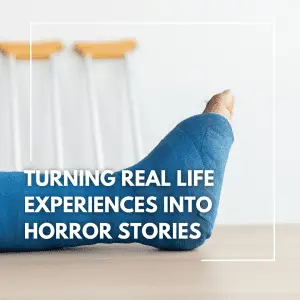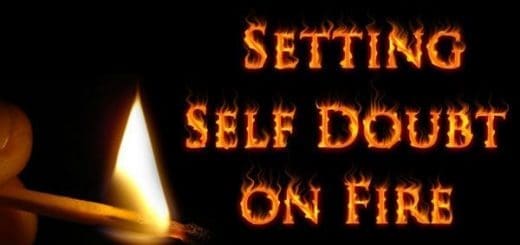Turning Real Life Experiences Into Horror Stories
Turning Real Life Experiences Into Horror Stories
 It’s estimated that 60% of men and 50% of women will experience some type of trauma in their lives. That can occur from childhood events, relationship issues, or even witnessing a horrifying event or natural disaster without directly being a part of it.
It’s estimated that 60% of men and 50% of women will experience some type of trauma in their lives. That can occur from childhood events, relationship issues, or even witnessing a horrifying event or natural disaster without directly being a part of it.
Those situations are difficult to get through and can have lasting negative effects. So, it might seem counterproductive to turn those difficult feelings into even darker material. However, research has shown that engaging with the horror genre can actually make it easier to process those feelings in healthier ways.
Horror movies and books can help to boost your mental health by allowing you to feel safe in a controlled situation. They can alleviate pent-up tension, and make it easier to process your feelings without having to deal with the “fight or flight” response in your mind.
As a writer, using some of your real-life experiences to craft a horror story could be exactly what you need to let go of your personal fears, or to release stress or tension that’s been building up for years.
So, how can you choose to approach difficult life experiences through your writing while making sure you’re doing it in a healthy and meaningful way?
Get Personal With Your Audience
One of the best ways to capture a target audience is to write about a real-life experience that a specific group of people can relate to.
If you’re a female author, you might have had negative or scary experiences in the past when you’ve had to tackle things alone. From walking to your car at night to running on a quiet trail, women have a tendency to experience attacks more than men and have to be extra cautious about protecting themselves.
That’s even true when it comes to driving alone. Women have to consider things like:
- Planning their route
- Keeping their vehicle well-maintained
- Locking their doors
- Being mindful of where they park
If you’ve had a negative experience, whether you were physically assaulted or stalked, you can use your words to empower other women. 2007’s Death Proof is a good example of this. The Quentin Tarantino film follows a male stalker who takes unsuspecting women for rides in his “death-proof” cars, murdering many of them. However, a few of the women end up taking charge by banding together and killing the stalker at the end of the film.
By writing about that kind of vengeance or empowerment, you can turn a traumatic and terrifying experience into something positive, or a horror story with a happy (albeit gruesome) ending.
Focus On The Bigger Issues
If you don’t want to draw from such personal experiences, consider some of the social injustices or major events happening in the world. Some things impact just about everyone, and using those events to create an intriguing story can actually make people feel safer.
We’re living in what some might call a “horrifying” world. We’re still recovering from a two-year pandemic, the economy is struggling, and it seems like every time you turn on the news you have to hear about everything from mass shootings to new threats to freedom and equality.
By bringing some of those realities into a horror story, you’re giving people an escape. You’re teaching them how they can cope with those scary, realistic things by helping them distinguish real life from fiction. Most importantly, you’re empowering readers to fight back.
Additionally, you never know who your story will connect with. While you might not have experienced inequality or systemic injustice in your life, writing about it as a problem in our society can get people thinking. Consider Jordan Peele’s Get Out. It’s already a cult classic and has been dubbed as one of the best horror films of all time, but it’s not your stereotypical slasher flick. It features a thoughtful script that left audiences both uncomfortable and curious for more.
Writing horror that brings real-world experiences to life in even scarier, more uncomfortable ways can spark necessary conversations, and help those struggling with those realities to have a stronger voice.
Blur the Lines
Science fiction and horror have always gone hand-in-hand. However, we’re living in a technologically-advanced world where things seem to be moving at lightning speed. There’s inspiration to be drawn from the tech world, as well as science, and even the socio-political sphere.
Technology and scientific advancements are generally good things. However, consider how many horror stories have been created that “blur the lines” between our current reality and what could be. Some of the most common subjects in that gray area include:
- Manufactured viruses
- AI taking over
- Being watched with cameras
- Smart technology becoming too “smart”
Even things that are meant to help us and offer protection can feel like horror film fodder – have you heard about insect droids? It practically screams New York Times bestseller, but they’re being used as “robotic pollinators” to seek out flowers. Still, by blurring the lines between reality and horror, you could easily craft a story featuring insect droids that threaten to take over humanity.
It’s important to bring a little realism into your horror work. Whether you’ve experienced something personally traumatic or you want to bring bigger issues to light, real-life experiences will capture the attention of your readership and will draw people in as they feel a sense of connection to the story – no matter how scary it is.
- About the Author
- Latest Posts












